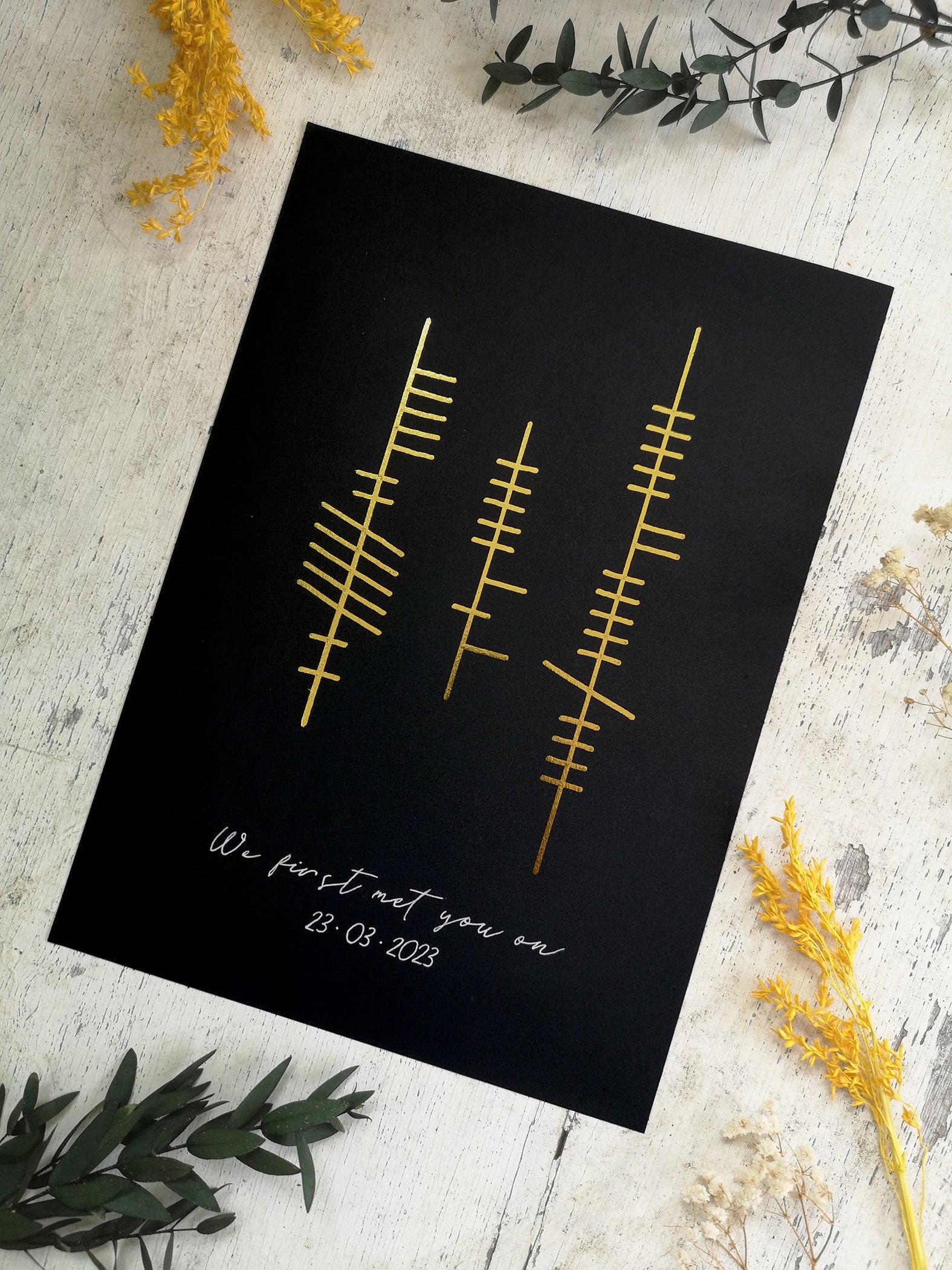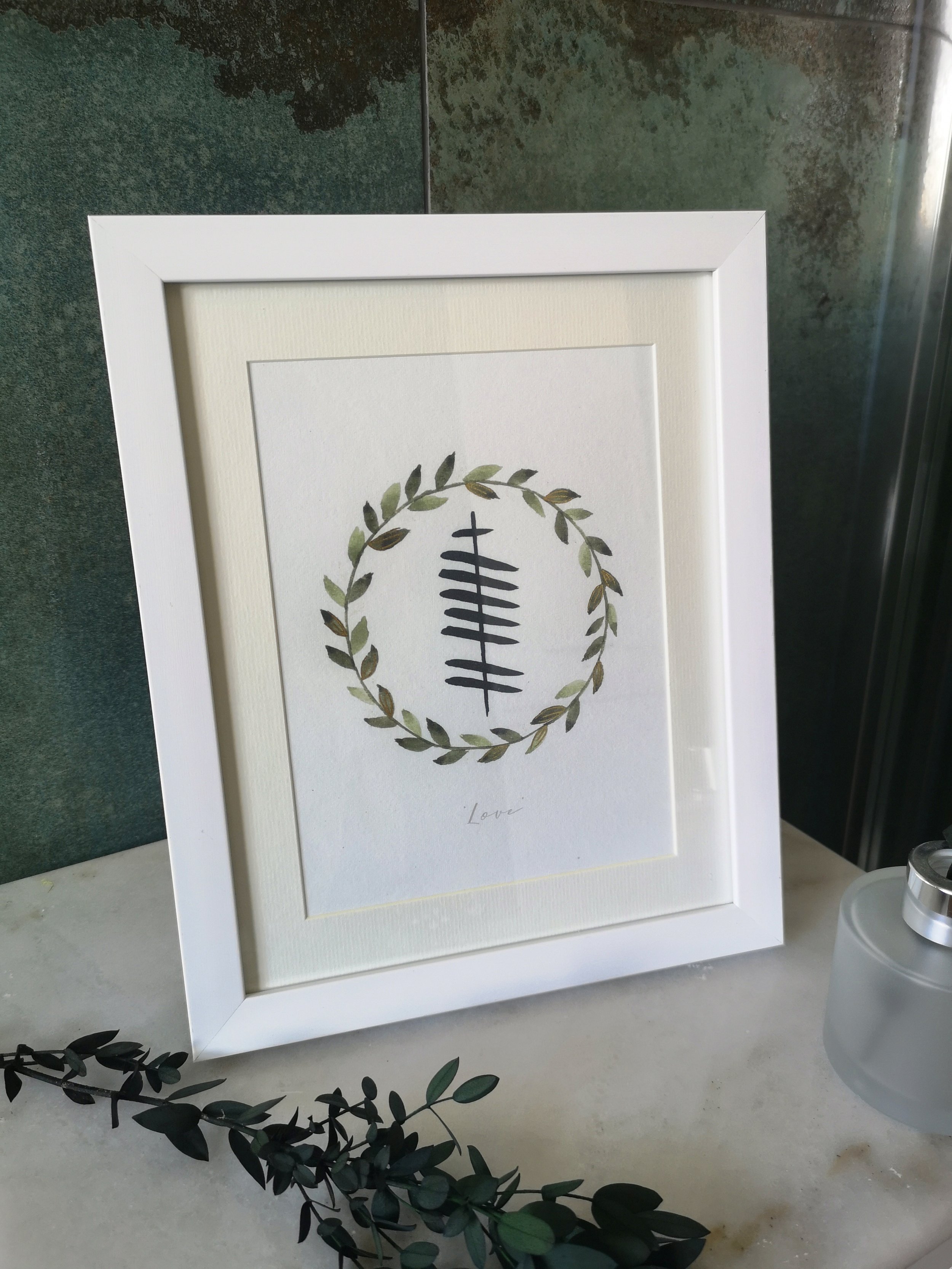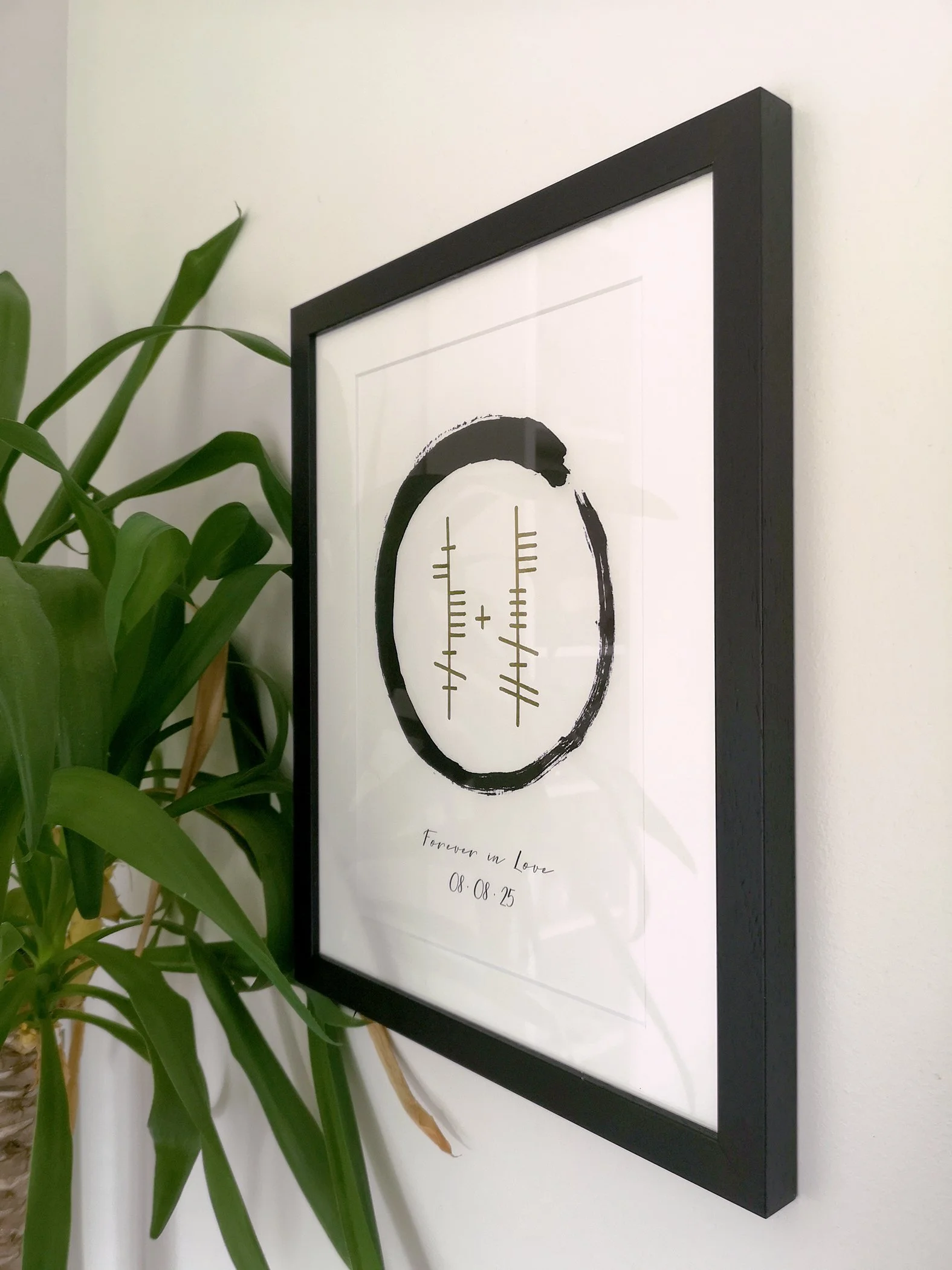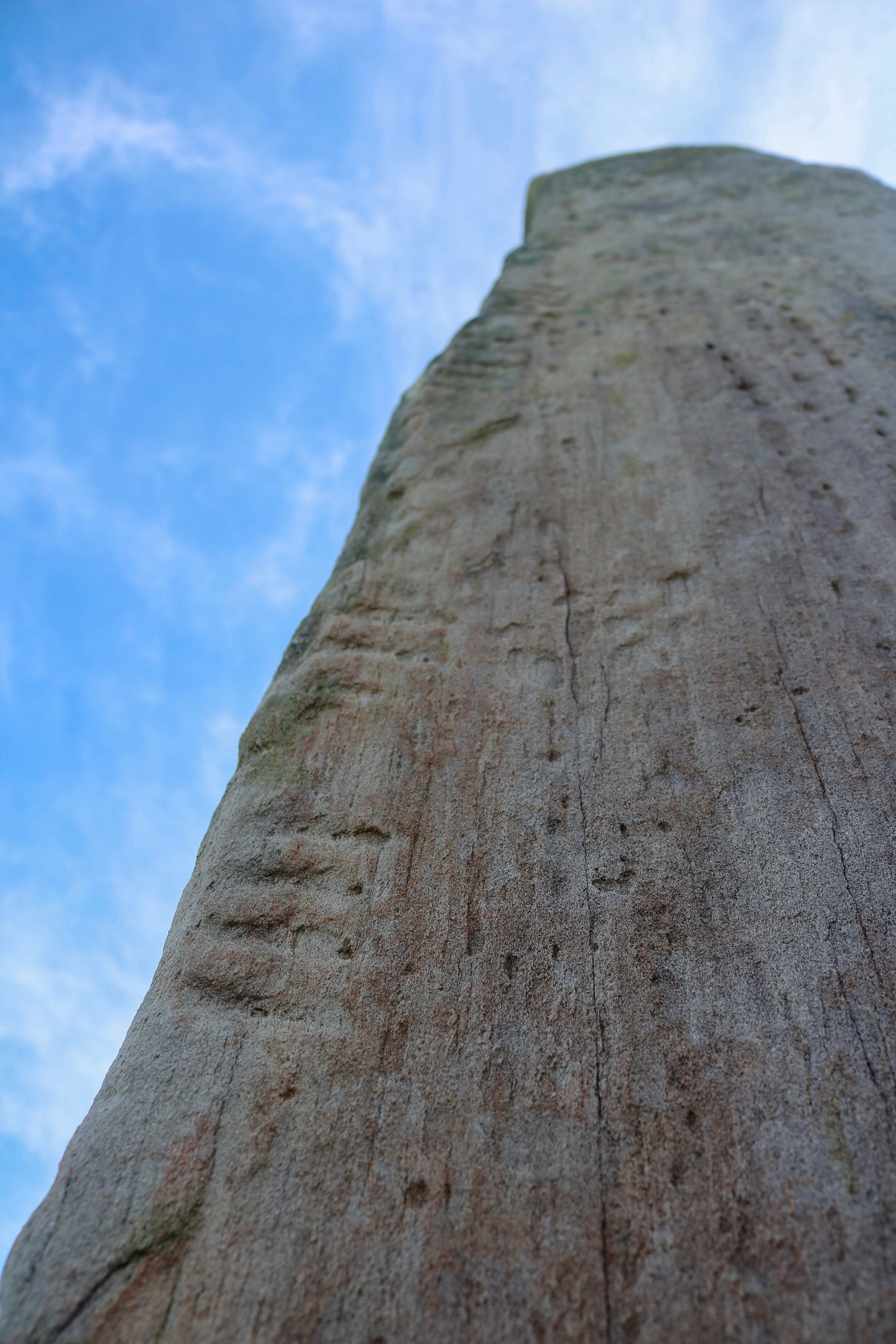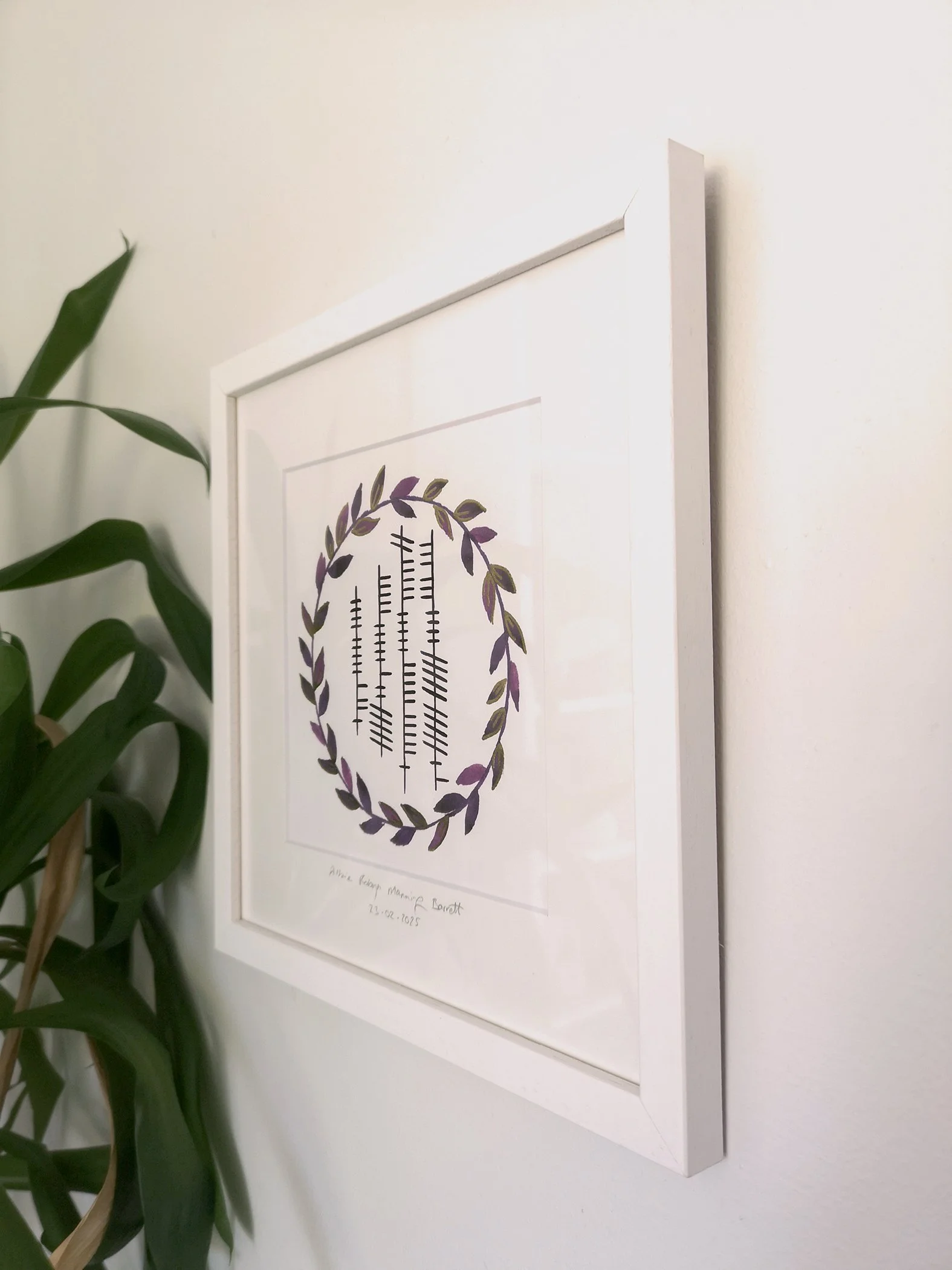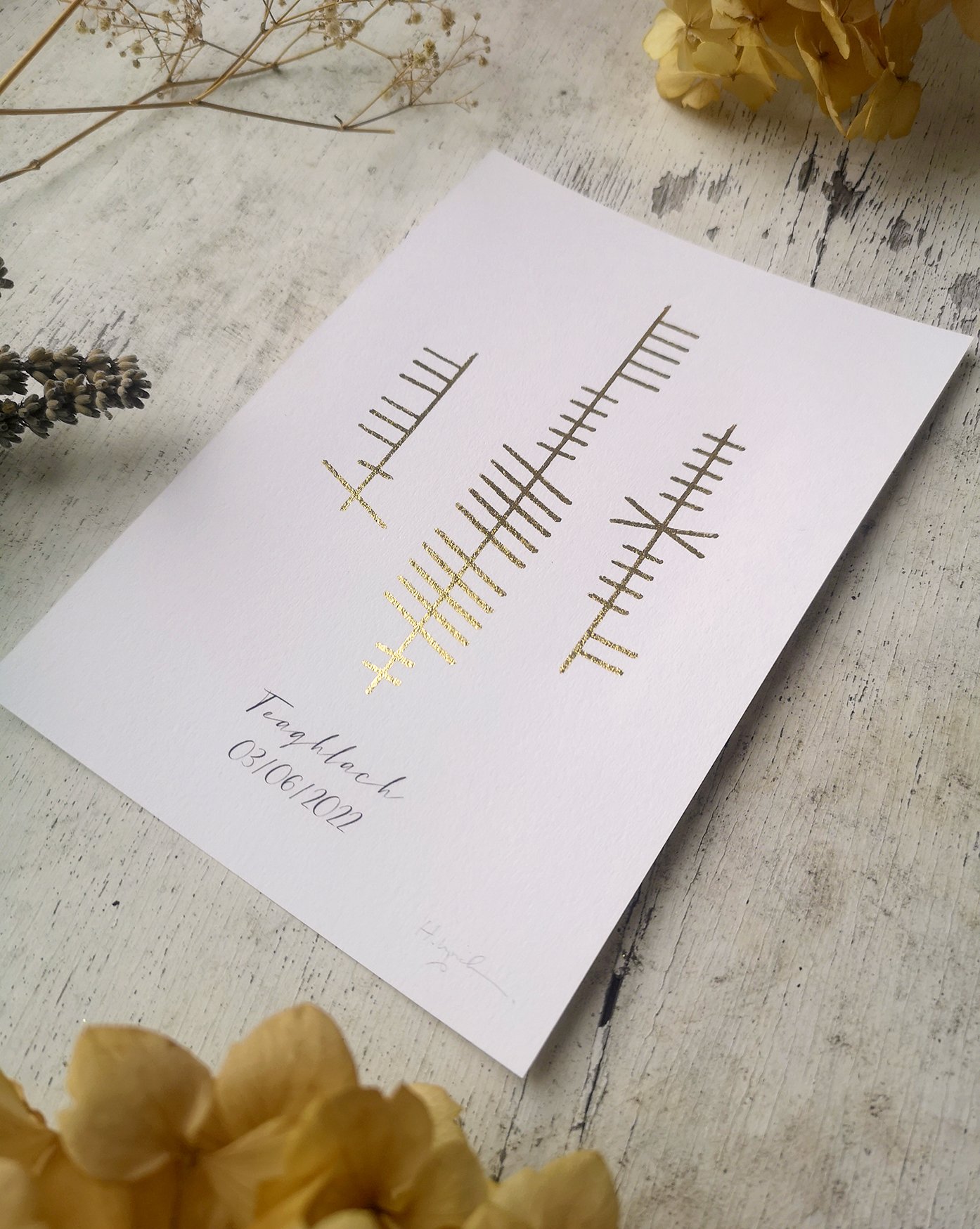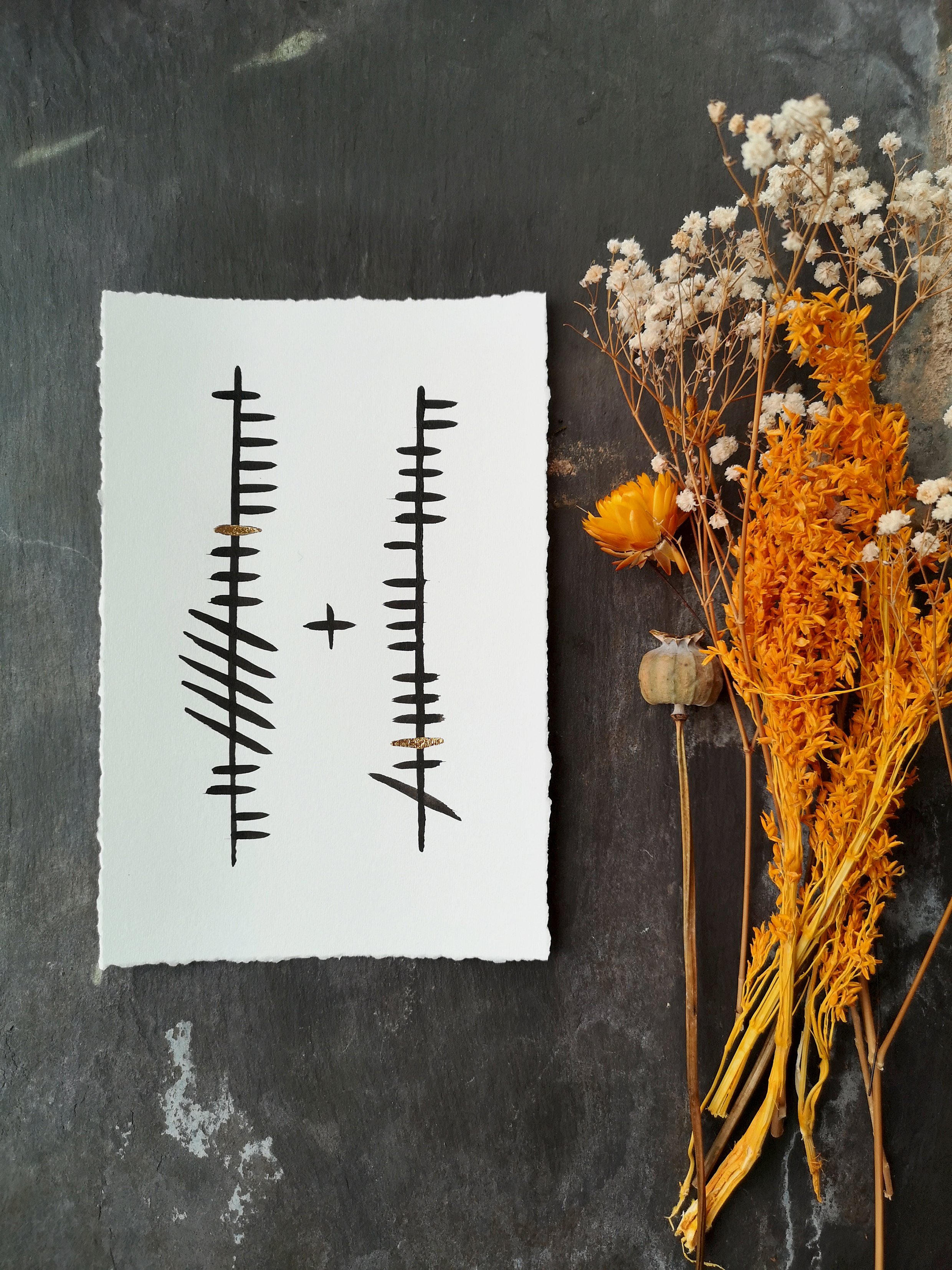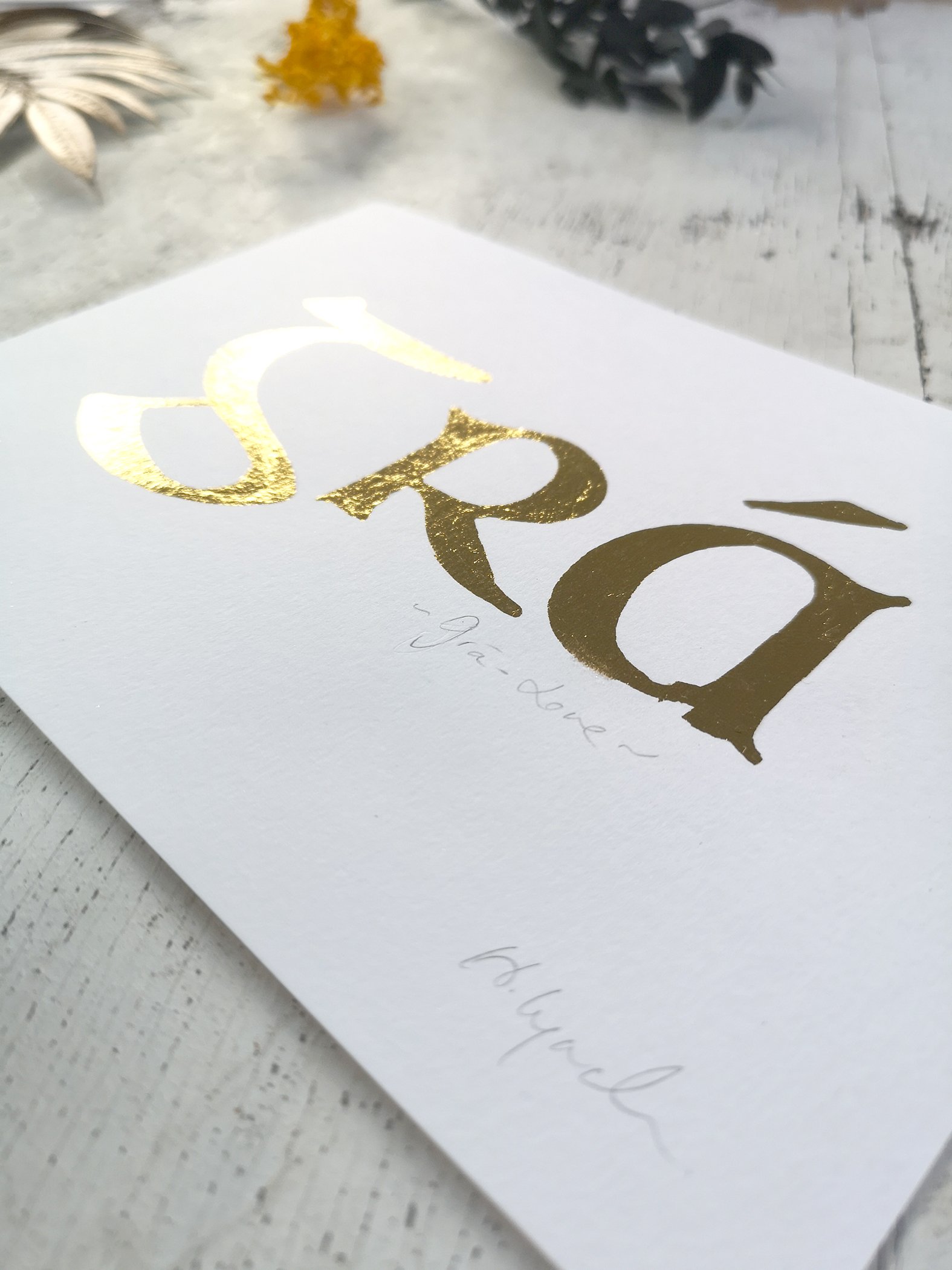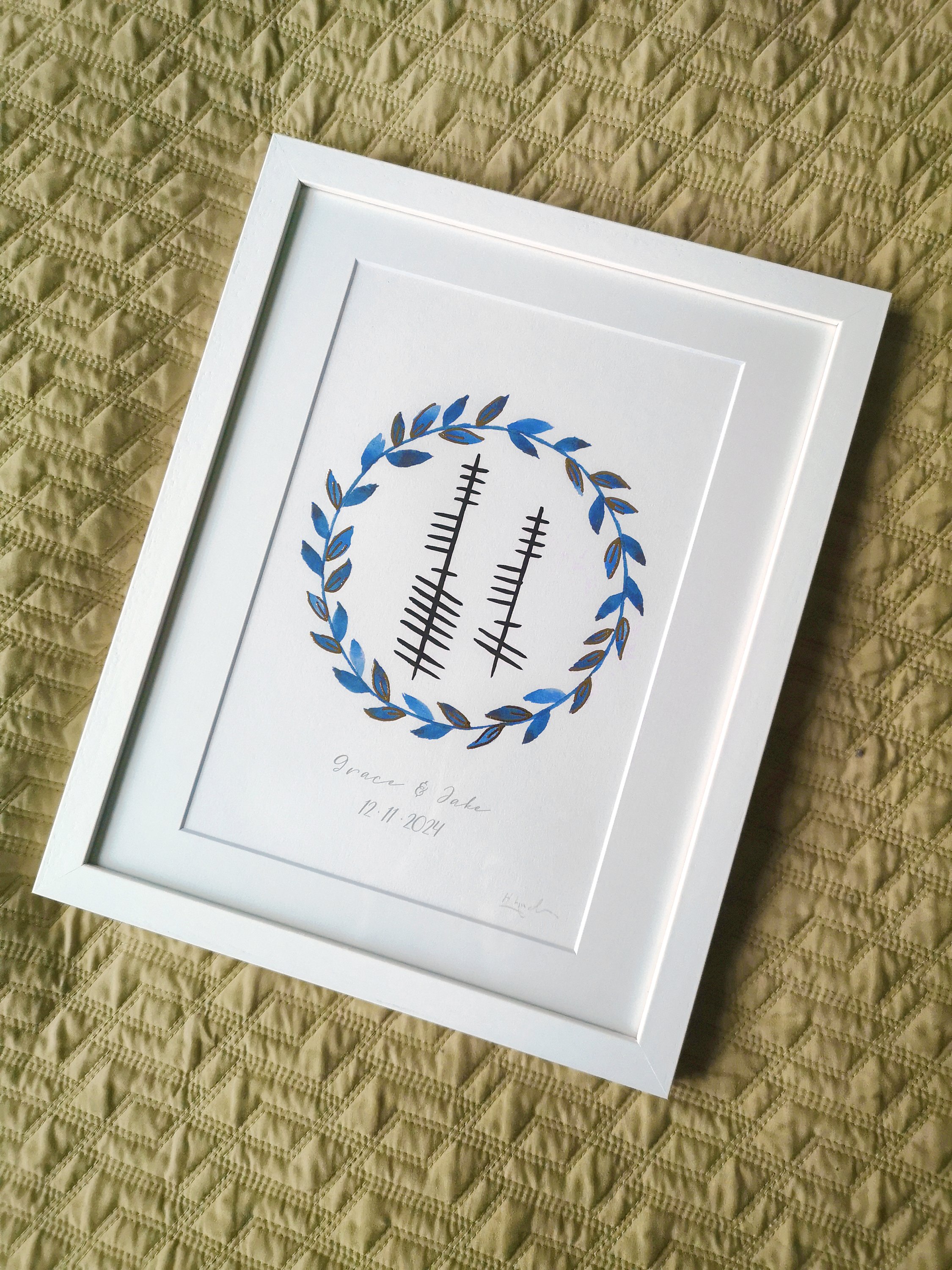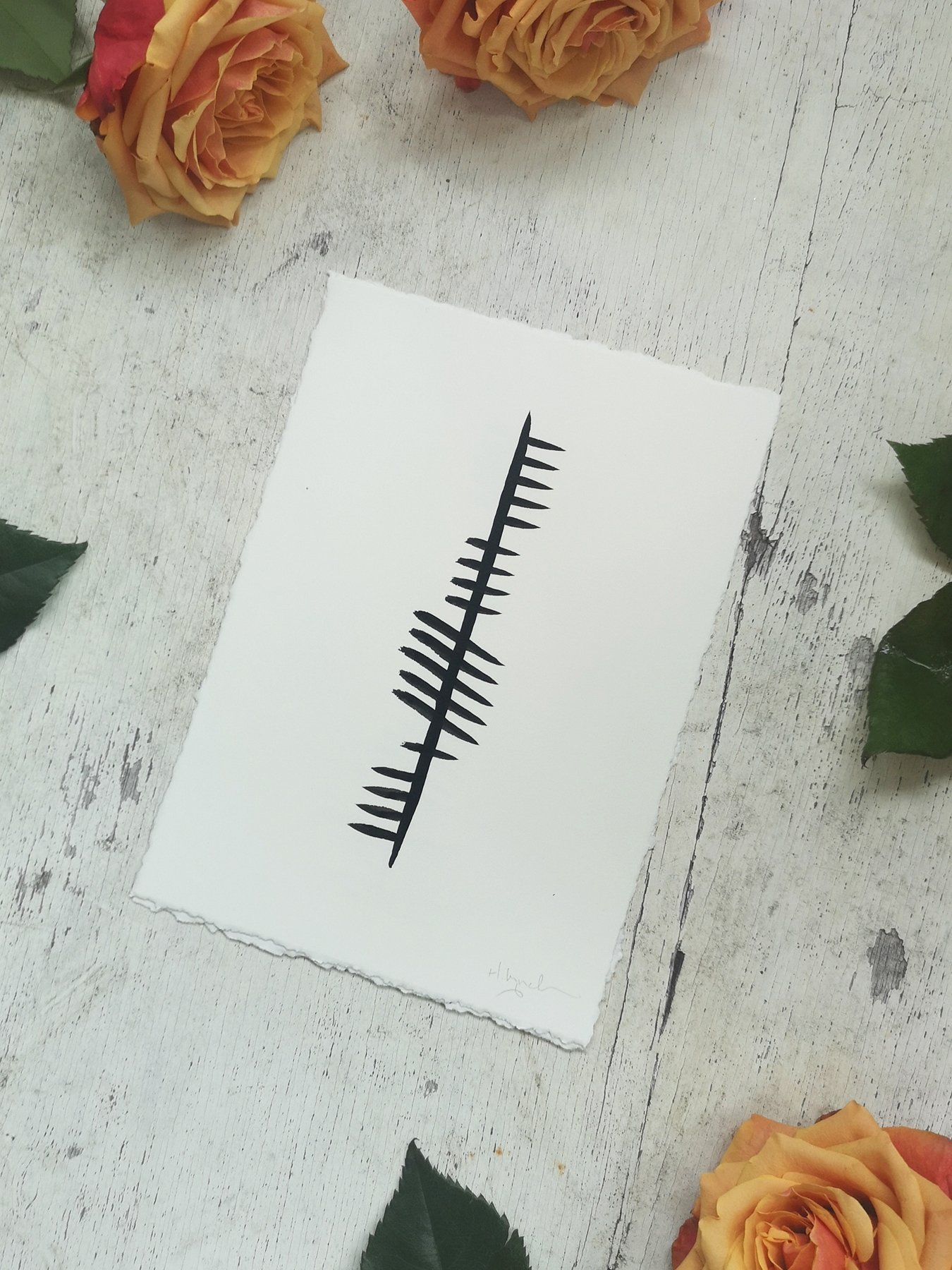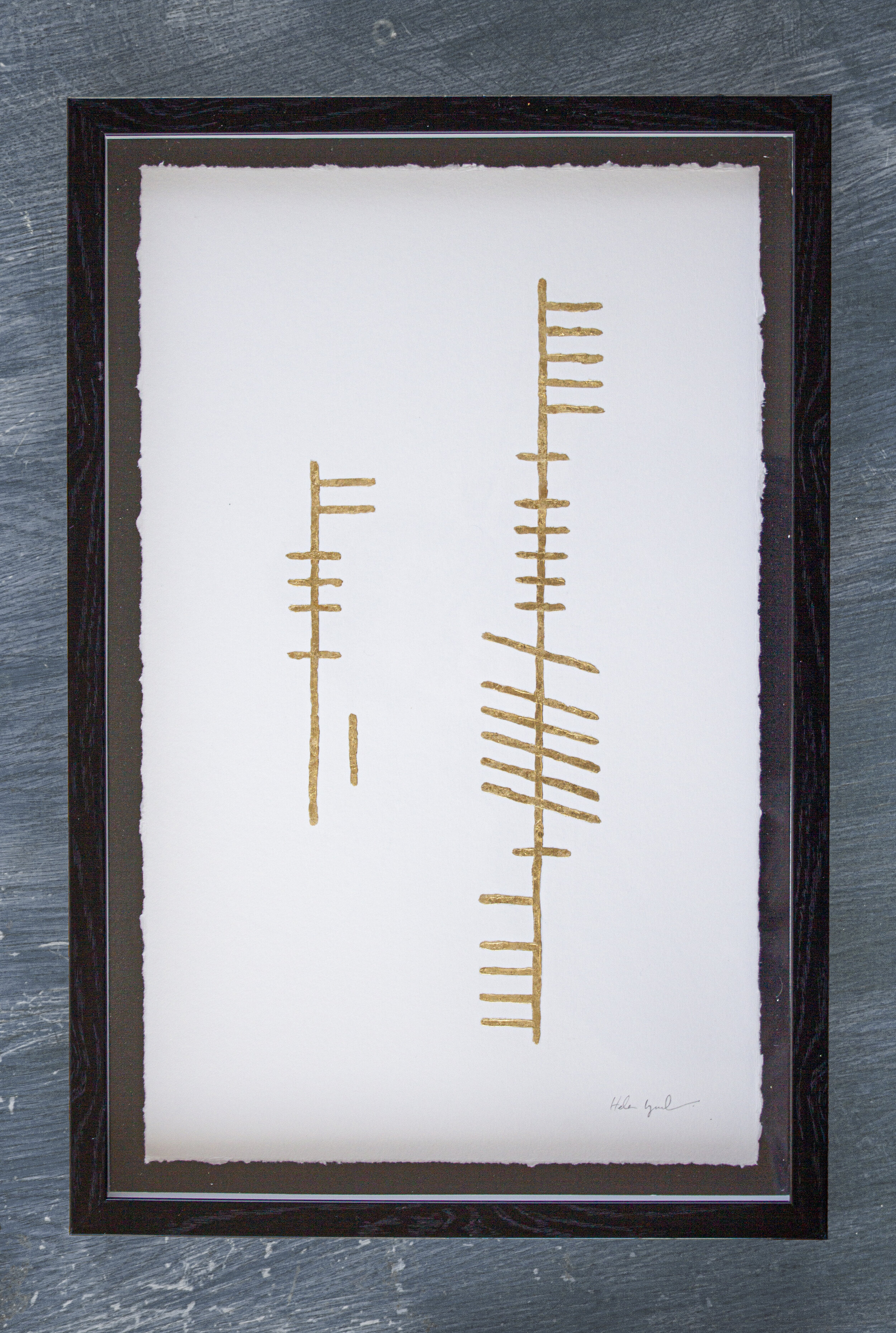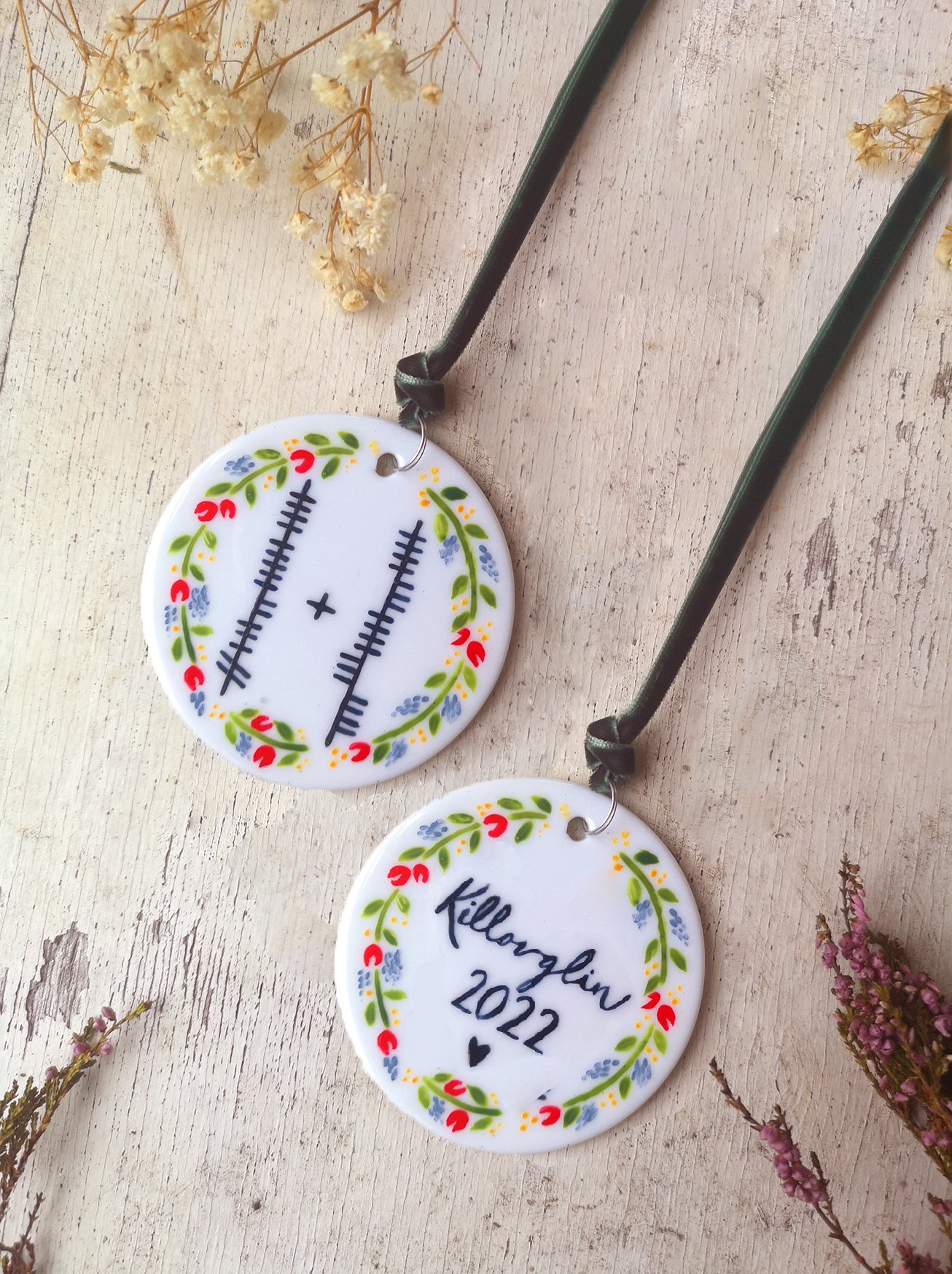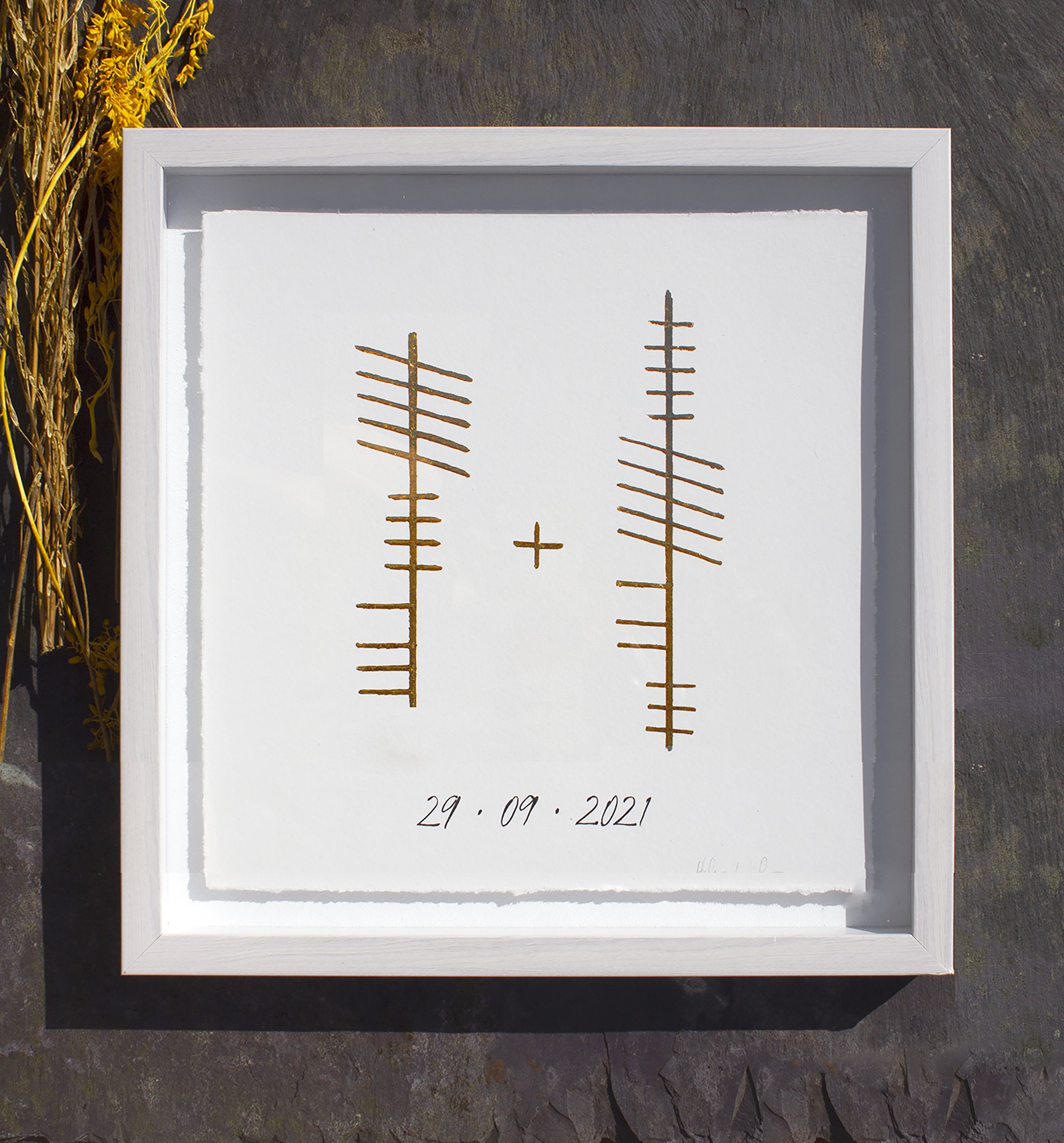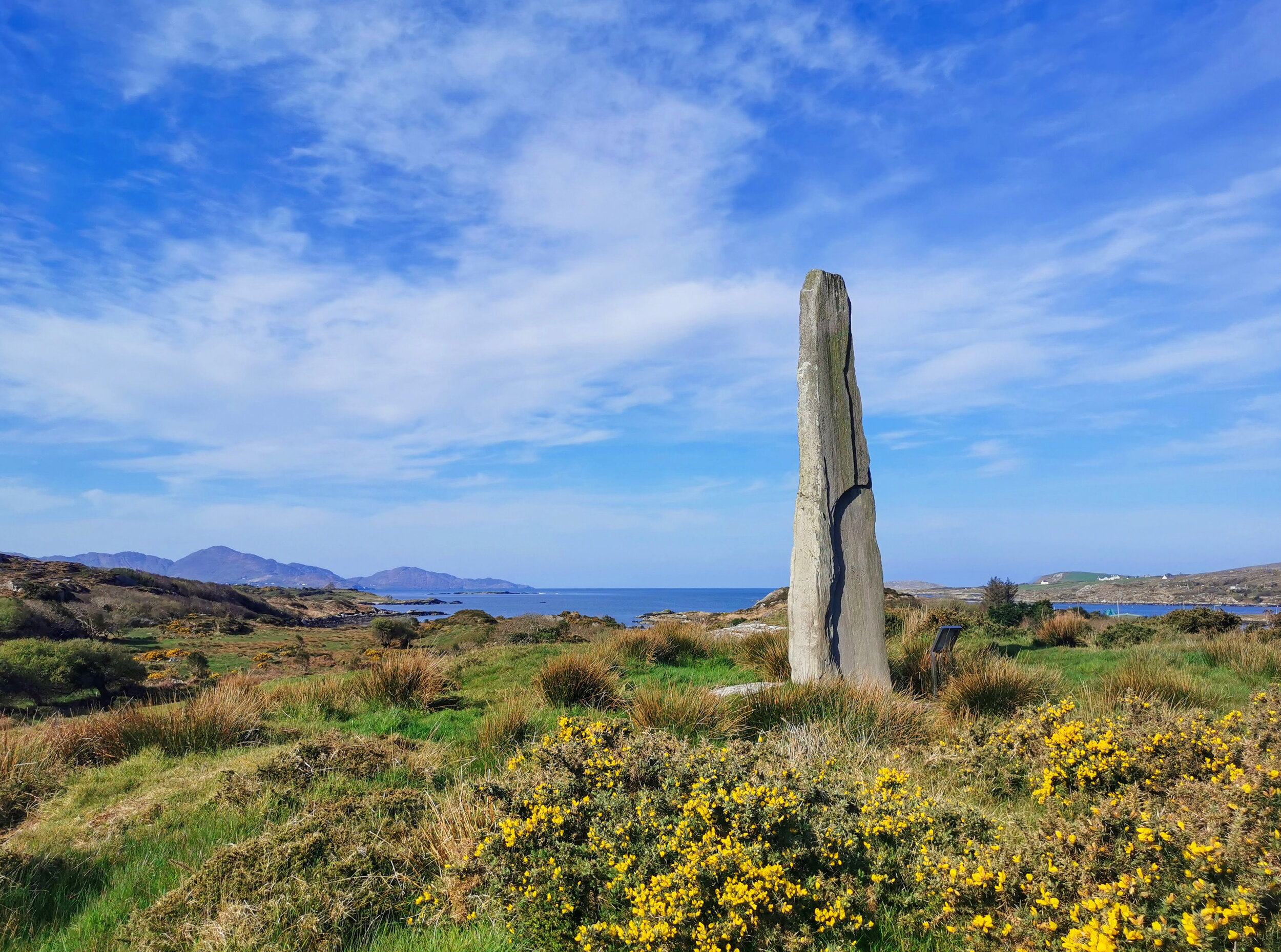
Image Credit: Ballycrovane Ogham Stone photographed by Lorraine Crowley ©2021
What is Ogham?
Ogham, or Ogam, is an ancient writing system from Ireland and parts of the UK, used between the 5th and 9th centuries. It's the earliest known writing in Ireland and represents the first intellectual achievement of Irish speakers. Although rarely used today, Ogham is a lasting symbol of Irish culture and heritage. Scroll down to read FAQs and learn more about the fascinating history of Ogham.
where does the ogham alphabet originate from?
Legend has it that God created many languages to limit human communication and power. The Irish sought to develop a unique language, claiming it was superior. Scholars drew from Latin and Greek to form the Alphabet, revealing connections to both.
why was ogham created?
The Ogham language is considered the first written form of Irish. It is unique because it was written rather than spoken. The earliest evidence of Ogham dates from the 4th century, while the first Roman script in Irish literature appears in the 7th century.
Ogham is also called The Alphabet of Trees
Ogham, called the Alphabet of Trees, has six characters named after trees. The Celts worshipped trees and believed that the spirits of loved ones stayed in them after death.
what are ogham stones?
Ogham stones are tall, linear stones in Ireland, Wales, and the UK, inscribed with names of prominent families, signifying land ownership and social status. The Ogham language features lines or dashes across a seam and is angular in shape. Traditional stones are rectangular with inscriptions on both sides. The term "Ogam" may stem from the Irish "og-uaim," meaning 'point-seam.'
Inscriptions held important information
Ogham was mainly used to write names, not long texts. In earlier times, people were usually buried at the edges of their land, and an Ogham stone was placed there with their name. These stones became important proof of land ownership.
Ogham was both carved and written
Ogham has three types: Monumental, Manuscript, and Scholastic. Monumental Ogham, carved in wood and stone, was used from the 5th to 7th century. Manuscript Ogham, with written inscriptions, was used from the 9th to 16th century. Scholastic Ogham, used since the 16th century, includes five extra characters.
Ogham can be written vertically or horizontally
Ogham inscriptions are carved vertically on stone or wood, read from bottom to top. In manuscripts, they are written horizontally and read from left to right. Ogham was used at the top of manuscript pages to note and display scholars' names. Some inscriptions start with an arrow to show which direction to read.
There are no capital letters in Ogham
All twenty letters of the alphabet are usually written in lowercase, without dashes or hyphens. In the 9th century, five extra letters were added to represent two vowels together, like ‘ea’ in the name Sean. To fit the modern 26-letter alphabet, some letters are replaced: j is changed to i, k to c, v to f, w to u, x to cs, y to i, and p to q.
The letter P did not exist
Before St. Patrick arrived in Ireland, the letter P was never used. The locals did not have the skills to say or write P, so they used Q instead. I respect this tradition by substituting P with Q in name transcriptions unless asked to do otherwise.
Ogham carvings have endured for sixteen centuries
There are 369 verified examples of Ogham writing surviving today. These exist in the form of standing stones concentrated in Ireland, but are also scattered across Scotland, the Isle of Man, South Wales, Devonshire, and as far afield as Silchester (the ancient Roman city of Calleva Attrebatum).
Special thanks to Professor Damian McManus, Head of Early Irish in Trinity College, Dublin for his help in compiling this list.



